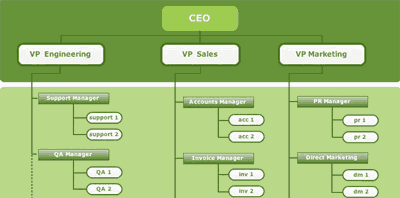The Internet and the web 2.0 tools have revolutionized the learning process on many levels. As the English teacher by profession, I for example, can see how the web has made learning and practicing languages much easier and more fun: you can watch videos in English on Youtube, listen to English podcasts and share knowledge (and even get assessed) by joining various English-language-learning communities.
This post looks at three types of tools that make the learning process interactive and visualized.
1. Mind-Mapping Tools

Online mind-mapping tools work great for brainstorming and developing ideas. Consider these example where mind-mapping software could turn quite in handy for learning and teaching:
- Examining the meanings of a word (or the synonym / antonyms);
- Getting prepared for an essay: create a clear structure of the future paper;
- Structuring the new material to (let your students) remember it easier.
Idea! Many online mind-mapping tools offer collaboration tools that let multiple people work on one mind map at a time. Collaborative knowledge and sharing ideas could make the learning process much more fun!
Some great free mind-mapping tools:
- Gliffy.com (free account comes with unlimited number of public diagrams)
- FlowChart.com (Multi-user, multi-page support; drawing tools; Record/Playback your flowchart)
- Glinkr.net (allows to attach links)
2. Quiz Tools for (Self)-Checking

Quizzes can work nicely to help one assess the students’ knowledge or perform self-check. Here’s a post detailing how online testing software by ProProfs.com makes the learning process much more enjoyable. There are a couple of examples of educational quizzes to demonstrate how useful the tool may turn when used properly.
The software has the set of really great tools:
- It allows to embed images and videos right inside the quiz;
- It has advanced and customizable grading options;
- It offers great analytics features visualizing the attempt scores.
3. Educational Videos

User-generated video has made learning things much easier. Nowadays you can find a video on each topic that explains things in an easy-to-digest way. Teachers have started creating and sharing educational videos as well. Both TeacherTube.com and SchoolTube.com can be huge databases of educational videos on any topic.
The best thing about these online educational tools is that you can set up learning classes for your kids at home, and if you involve them, they also get to have fun while educating themselves. If you love learning new things, you remember and get to understand everything much easier!
Do you have any more examples on how web 2.0 tools make learning and teaching more interactive and entertaining?
Guest author Ann Smarty is the owner of MyBlogGuest, the free guest blogging community which can help find free content for your blog or promote your brand by providing high-quality content.